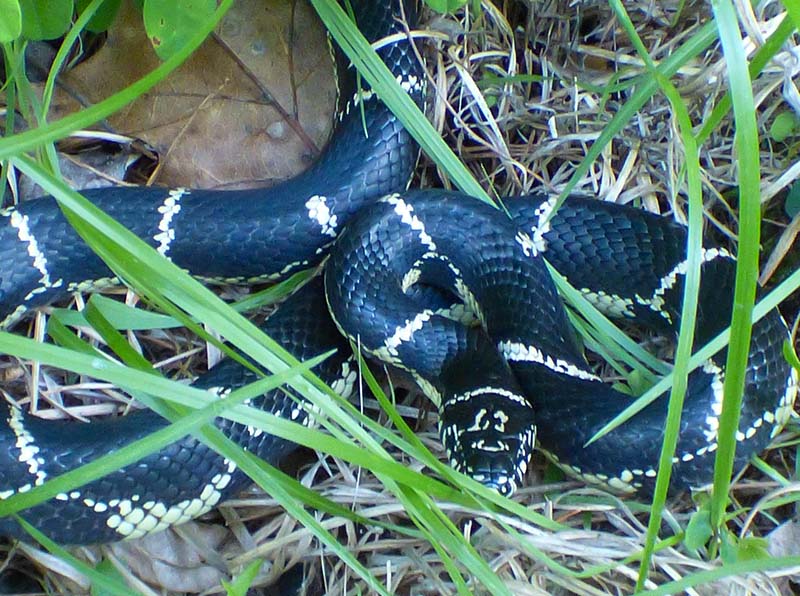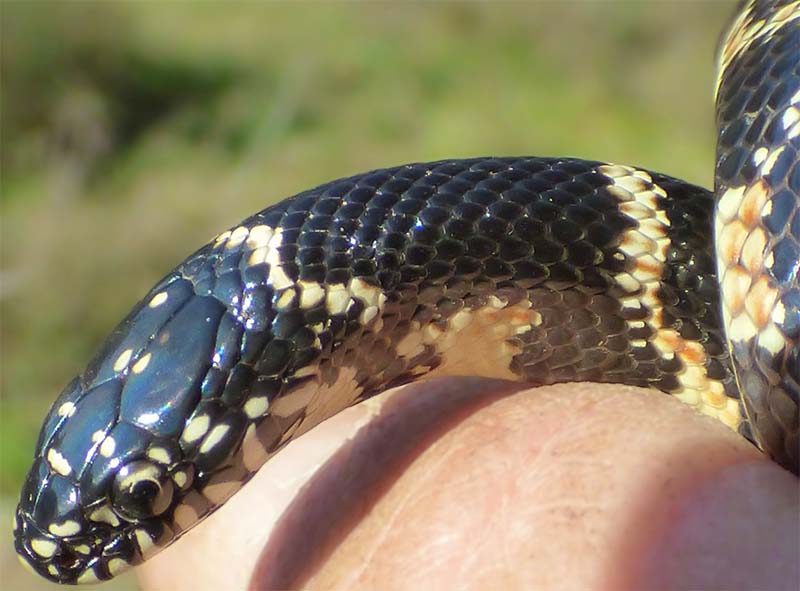
- Scientific Name
- Lampropeltis getula
- Range
- East Side of the Appalachians
- Also Known As
- Common Kingsnake, Chain Kingsnake
- Venomous
- No
- Features
- Black Snake With White Stripes on Sides With Crossbars
- Prey
- Snakes
- Litter Size
- 3 - 24 Eggs per Birth
- Life Span
- 15 - 25 Years
- Length
- 36 - 48 Inches
Quick Links for Eastern Kingsnake
Eastern Kingsnake Description
Eastern Kingsnake Appearance
This snake tends to be black with white or yellow crossbars. These crossbars can connect to the other side, or be broken, and the stripes on the sides may not be present.
However, a second pattern can appear with an irregular number of white to yellow spots.
This snake is often confused with its cousin the Eastern Black Kingsnake, which it’s crossbars are usually darker and muted than the Eastern Kingsnake.
Size
This snake is usually between 30 to 40 inches long, however, the record length for this snake is about 56.25 inches. The record found in Virginia is 46.8 inches.
Juveniles tend to be 8 to 9 inches long.
Eastern Kingsnake Behavior
These snakes are solitary animals and only are seen together with other Kingsnakes when mating. They are active during the day and can be seen hunting, or resting under logs or leaves. During the winter they hibernate in animal burrows, logs, or rock crevices.
These snakes can be quite docile when caught, but remember that it may bite if that snake is feeling agitated. The docile nature is what draws snake owners to have one as a pet but as a reminder:
It is illegal in Virginia to keep Snakes found in the wild as pets
Range and Habitat of The Eastern Kingsnake
Range
They can be found east of the Appalachians here in Virginia. If you find one in southwest Virginia, then they are likely their cousin the Eastern Black Kingsnake.
Habitat
Kingsnakes prefer the same habitat as other Colubrids such as the milk snake and Copperhead. These snakes prefer forests and fields, or in other words areas with a lot of covers. These snakes can also frequently be found near water sources such as swamps, canals, and streams. They spend most of their time undercover.
Diet of Eastern Kingsnake
These snakes’ main diet includes other snakes. They even eat Copperheads and Timber Rattlesnakes. This snake has developed immunity to the venom of these snakes and has developed a hunting technique to avoid being bitten down.
This snake is one of the few snakes that actively hunt other snakes, making it a key part of Virginia’s ecosystem. As it keeps the venomous snakes such as the Cottonmouth, and Copperheads numbers down.
Snakes aren’t the only prey for Eastern Kingsnakes. They also eat amphibians, turtle eggs, bird eggs, lizards, and small rodents.
Young and Reproduction
Reproduction
Reproduction in these snakes has been little studied in Virginia. All we know is that Mating season for these snakes is in the spring here in Virginia. In other parts of the US it has been seen that the males bite the females on the neck when mating.



